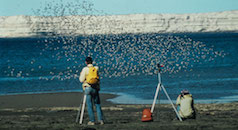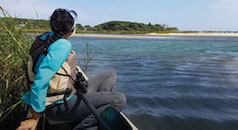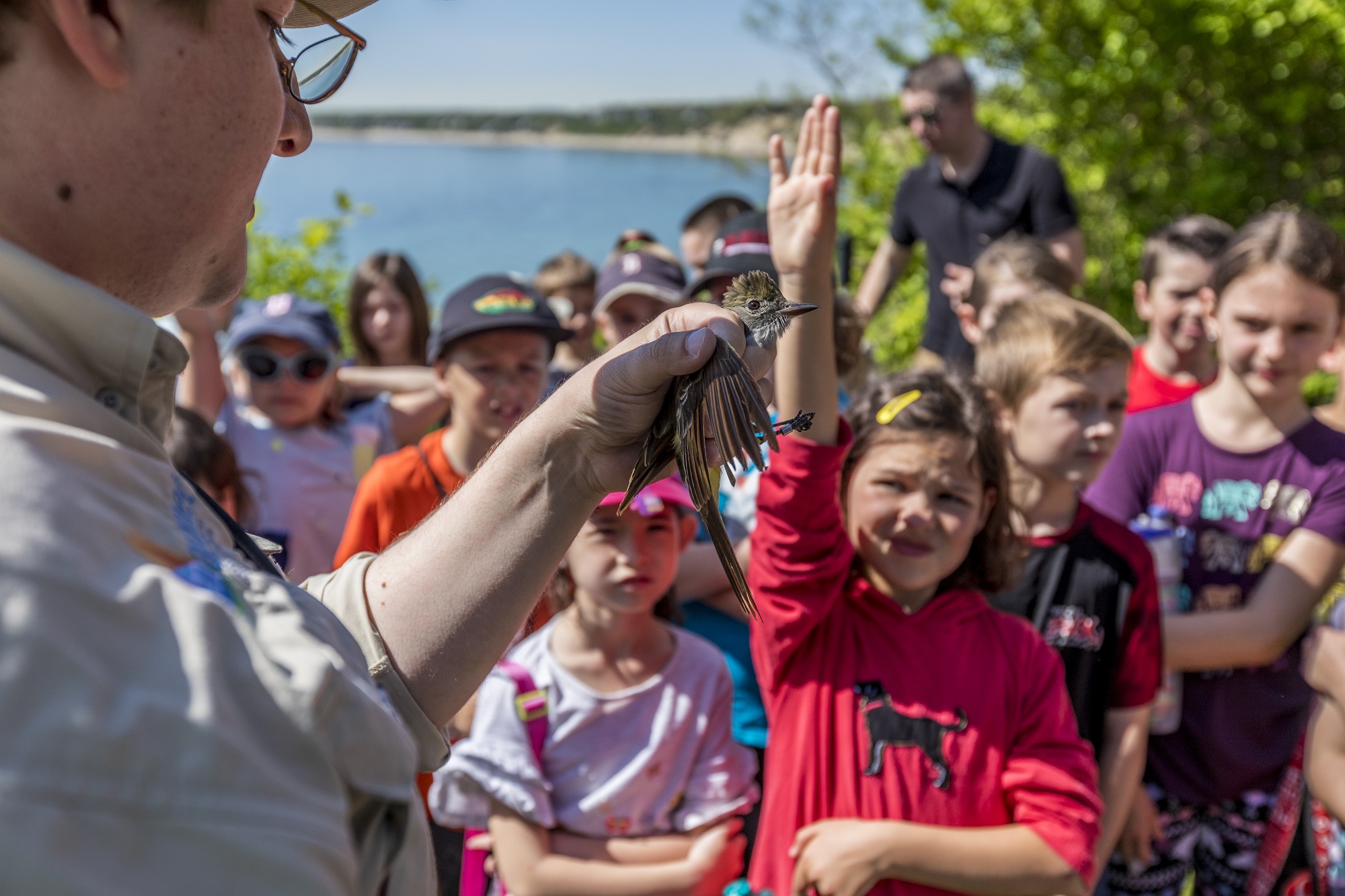In mid-April, five Whimbrels tagged with satellite transmitters flew from their wintering grounds on the coast of Brazil to three separate staging areas in the Gulf of Mexico and one site in coastal Georgia.
These flights have revealed the third leg of a previously unknown loop migration route and identified several sites that may be important staging areas for the large shorebirds. These “staging” or “stopover” locations, which are rich in food resources, are critical to the birds before undertaking long flights.
Manomet’s Brad Winn has partnered with Fletcher Smith from the Center for Conservation Biology, and Tim Keyes with the Georgia Department of Natural Resources in this effort to study the migration ecology of Whimbrels in the eastern United States.
“The connection between Brazil and the western Gulf of Mexico was new to science, and it delighted the biologists watching the flights unfold,” Winn said. “The birds had all been wintering in St. Marco Bay, Maranhoa, Brazil, part of a Western Hemisphere Shorebird Reserve (WHSRN) site, before departing independently on the next leg of their incredible journey.”
One of the Whimbrels, named Pingo, was originally tagged by Smith on Canada’s Mackenzie River Delta. Pingo flew across the northern edge of South America, then across the Caribbean, and then across the entire Gulf of Mexico to land on Anahuac National Wildlife Refuge in Texas.
“We about fell out of our chairs” Winn said. “The non-stop, four day, 4,000 mile flight was equivalent in distance to a jet from Miami, Florida, to Anchorage, Alaska.”
It was not just the distance, though, that was so interesting.
“We have been wondering about the birds at Anahuac for years,” Winn said. “This refuge on the upper coast of Texas has been known as an important site for Whimbrels during spring migration, but virtually nothing was known about the origin or destinations of the Whimbrels there. Now at least we know one piece of that puzzle.”
Two other Whimbrels, named Akpik and Taglu, flew to Laguna Madre in the state of Tamaulipas, Mexico, a WHSRN site that is a critical wintering area for Long-billed Curlew and Piping Plover. The Whimbrel Postel flew back to roost in the Altmaha River Delta WHSRN site in coastal Georgia where he was originally tagged by the research partners last year.
“Four of the five birds are now staging at WHSRN sites,” Winn said. “This is very exciting and confirms the importance of WHSRN as a powerful conservation strategy for imperiled shorebird populations.”
Mackenzie (named for the river where Fletcher Smith tagged her last June) is the one bird being tracked that is not currently staging at a WHSRN site. She flew from Brazil to Point Au Fer Island, near Fourleague Bay in southern Louisiana, which is in the heart of the area impacted by the Deepwater Horizon oil spill.
“Our next step is to get people out to the areas that were previously unidentified as important sites for Whimbrels to determine how many birds are there and how they are using local resources,” Winn said. “Determining the extent to which Whimbrel populations are relying on the Tamaulipas, Mexico, and Demieres Isles, Louisiana sites is a priority.”
After staging for about five weeks, the birds will make nonstop flights of several thousand miles to reach their Arctic breeding grounds.
Winn will go back to Georgia in mid-May to fit an additional four Whimbrels with transmitters.
Since this project began at the Center for Conservation Biology in 2008, a total of 23 birds have been tracked over 200,000 miles. Additional project collaborators include Jennie Rausch and Lisa Pirie of the Canadian Wildlife Service.
“Using satellite tracking to study Whimbrel migrations allows us to develop a better understanding of what threats impact their population,” Winn said. “Each bird relies on only a handful of sites each year. With knowledge of which sites they depend on and how those sites are connected, we are better able to develop strategies with many partner organizations to protect this declining species.”
To follow the journeys of Mackenzie, Akpik, Pingo, Taglu and Postel, visit http://www.seaturtle.org/tracking/?project_id=369.
– Haley Jordan





 Back to all
Back to all